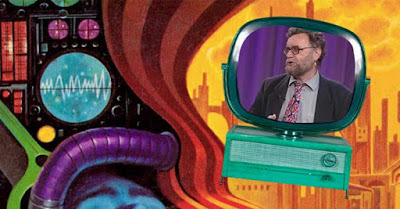"We Are All Heroes..."
.
 Add caption
Add caption
Recently, Vasily Vladimirsky interviewed me for Gorky Media in Russia. The article is online and English speakers can get a rough idea of what was asked and what was said by using a translation engine.
Machine translation is not yet an exact art, alas. It's miraculous that it can be done at all. So if you read it in English, I should warn you that what I meant to say got distorted from time to time. Here, however, are two questions and answers from the original English:
Five Hugo awards went to you for short stories and a Nebula award for novels. What is the difference between working with a small form and a medium form from working on a novel?
Short stories are verbal machines constructed to deliver a single result: to make the reader laugh, cry, think, wonder, whatever. So they should be clear and clean, with an absolute minimum of moving parts and no wasted words. A novel is a great shaggy wandering beast. There’s room in it for small jokes, scenes of random beauty, dialogue whose sole purpose is to be entertaining to the reader. So long as the plot keeps on moving forward, it doesn’t necessarily have to be the most efficient way of getting where you’re going. A short story is an experience and a novel is a world.
Howard Waldrop put it best when he said that a short story is about the single most important event in the protagonist’s life and a novel is about the most important period in the protagonist’s life.
As for the difference in writing them, a novel allows the writer the pleasant experience of living in somebody else’s life for a long period of time. But a short story has the potential to achieve perfection. I’ve written several perfect short stories. Nobody’s ever written a perfect novel.
<!-- /* Font Definitions */ @font-face {font-family:Calibri; panose-1:2 15 5 2 2 2 4 3 2 4; mso-font-charset:0; mso-generic-font-family:auto; mso-font-pitch:variable; mso-font-signature:-520092929 1073786111 9 0 415 0;} /* Style Definitions */ p.MsoNormal, li.MsoNormal, div.MsoNormal {mso-style-unhide:no; mso-style-qformat:yes; mso-style-parent:""; margin:0in; margin-bottom:.0001pt; mso-pagination:widow-orphan; font-size:10.0pt; font-family:"Times New Roman"; mso-fareast-font-family:"Times New Roman";} .MsoChpDefault {mso-style-type:export-only; mso-default-props:yes; font-size:10.0pt; mso-ansi-font-size:10.0pt; mso-bidi-font-size:10.0pt;} .MsoPapDefault {mso-style-type:export-only;}size:8.5in 11.0in; margin:1.0in 1.25in 1.0in 1.25in; mso-header-margin:.5in; mso-footer-margin:.5in; mso-paper-source:0;} div.WordSection1 {page:WordSection1;}
Your novel "The Iron dragon's Mother", the final part of the "Iron Dragons" trilogy, is published by Azbooka publishing house this month. More than a quarter of a century has passed since the first novel of the trilogy was published. How has your view of the world described in Dragon novels changed during this time?
I don’t think it has. I saw the world as a beautiful, alluring, dangerous place back then and I see it as beautiful, alluring, and dangerous now. Life is full of pain and loss and ecstasy. It’s no place for wusses. I’ve said this before, but I’ll say it again here: There should be a sign by the womb door reading: HEROES ONLY.
We are all heroes, descended from thousands of generations of heroes.
<!-- /* Font Definitions */ @font-face {font-family:"Cambria Math"; panose-1:2 4 5 3 5 4 6 3 2 4; mso-font-charset:0; mso-generic-font-family:auto; mso-font-pitch:variable; mso-font-signature:-536870145 1107305727 0 0 415 0;} @font-face {font-family:Calibri; panose-1:2 15 5 2 2 2 4 3 2 4; mso-font-charset:0; mso-generic-font-family:auto; mso-font-pitch:variable; mso-font-signature:-520092929 1073786111 9 0 415 0;} /* Style Definitions */ p.MsoNormal, li.MsoNormal, div.MsoNormal {mso-style-unhide:no; mso-style-qformat:yes; mso-style-parent:""; margin:0in; margin-bottom:.0001pt; mso-pagination:widow-orphan; font-size:10.0pt; font-family:"Times New Roman"; mso-fareast-font-family:"Times New Roman";} .MsoChpDefault {mso-style-type:export-only; mso-default-props:yes; font-size:10.0pt; mso-ansi-font-size:10.0pt; mso-bidi-font-size:10.0pt;} .MsoPapDefault {mso-style-type:export-only;}size:8.5in 11.0in; margin:1.0in 1.25in 1.0in 1.25in; mso-header-margin:.5in; mso-footer-margin:.5in; mso-paper-source:0;} div.WordSection1 {page:WordSection1;}
You can read the original interview, in Russian, here.
*
Michael Swanwick's Blog
- Michael Swanwick's profile
- 546 followers



